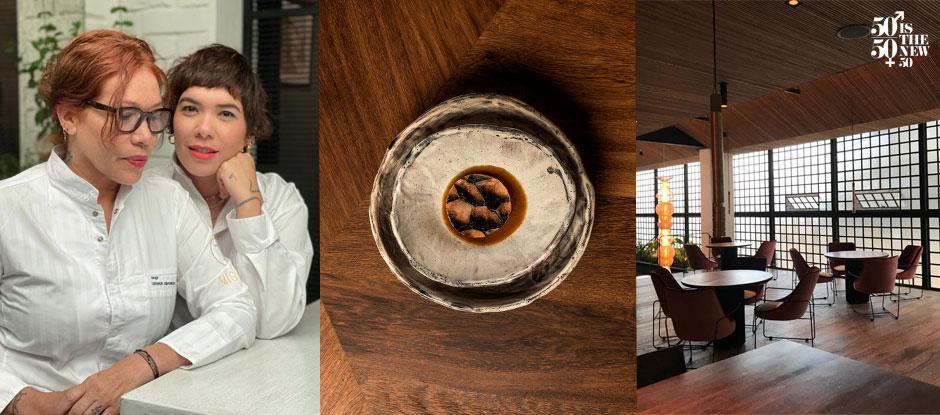In 2020, the pandemic stopped Bogotá restaurant Leo in its tracks as it was about to relocate. For more than a year, the restaurant hibernated while chef Leonor Espinosa and her daughter and sommelier Laura Hernández Espinosa refined its concept and looked for its new home. Today sees the momentous reopening of Leo, with plenty of innovations along the way
Since chef Leonor Espinosa opened Leo in 2007 with a pioneering menu focused on Colombia’s biodiversity, the restaurant has gone on to win widespread international acclaim. A permanent fixture in the Latin America’s 50 Best Restaurants list since 2014, it also debuted on The World’s 50 Best Restaurants at No.49 in 2019, becoming the first Colombian restaurant to do so. Espinosa herself has received numerous accolades, such as the Latin America’s Best Female Chef title in 2017 and the Estrella Damm Chefs’ Choice Award in 2020. Here, we explore the surprises that the restaurant’s new iteration has in store.
Leo’s dining room and Laura’s dining room
The new space in the upmarket neighbourhood of Chapinero is spread over two floors, providing a blank canvas for a key new development. Restaurant Leo now features two dining rooms under one roof: one led by the creativity of chef Espinosa; the other influenced by Hernández Espinosa’s passion for wines and Colombian distillates.
“There are two spaces, but it’s one Leo restaurant,” stresses Espinosa. “Of the ingredients, 100% come from Colombia. We don’t import anything, which is something that has always been extremely important for us.” Leo’s dining room, on the ground floor, features a revised and evolved tasting menu, while Laura’s dining room upstairs is a new concept by the mother and daughter duo with a focus on mixology and international gastronomic trends.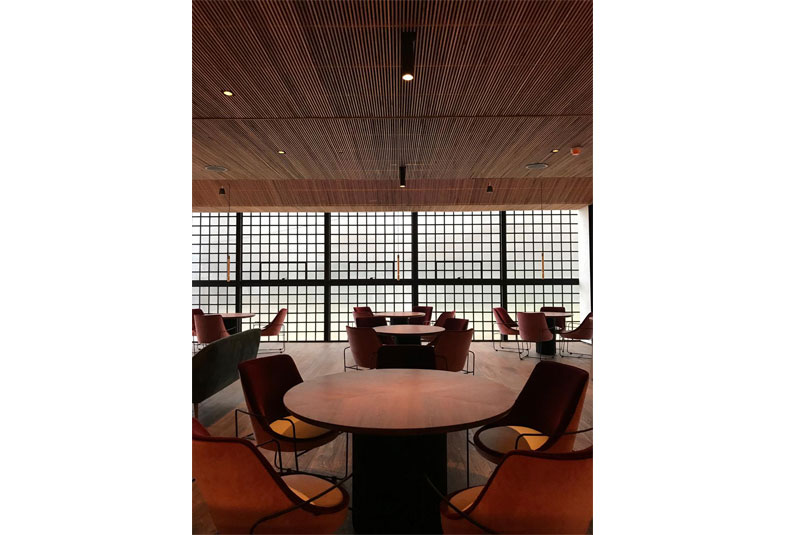
Laura's dining room
“The menu in Laura’s dining room carries the same philosophy, but it’s more open to global trends and ingredients that are not as closely linked to Colombia’s biodiversity,” explains Hernández Espinosa. “We want to reach the local public, those who might want to repeat the dining experience several times, or those who don’t have the time to eat a whole tasting menu, but they want to get to know Leo and to have a good drink, even if they only have one hour.”
The menu at Laura’s dining room is designed to be shared and is inspired by other gastronomic cultures, with preparations such as escabeche and ravioli, and ingredients like arrayán (myrtle berries) and kaffir limes. The dining room features 50 covers and a long bar, where Hernández Espinosa plans to showcase the unique drinks she has been developing over the last two years.
“We created our own line of distilled spirits named Territorio,” she says. “Each distillate was conceived based on an area of Colombian biodiversity. For instance, the one called Desert is a distillate of prickly pear and cactus. The one that evokes the feeling of the Andean moorland is a distillate of lupa, a plant typical of the cold areas of the mountains. And Piedemonte [foothills] is made from coca leaves and cocoa nibs.”
View this post on Instagram
Unique to Leo and served in both dining rooms, Territorio is also the basis for a series of cocktails developed under Hernández Espinosa’s creative direction. The young Colombian – who is a sommelier by trade – has also expanded Leo’s wine offer, with a new cellar housed on the mezzanine level intersecting the dining rooms.
The cellar is also where the mother and daughter’s creativities fuse: it features a single four-cover table, symbolically placed halfway between the two concepts. “That table is in the hands of both the chef and the sommelier, and it’s the only one that might receive dishes from both kitchens,” highlights Espinosa.
A revised tasting menu
For the last few years, the gastronomic experience at Leo has been inspired by a concept called Ciclo-Bioma, which focuses on the country’s ecosystems and explores the ways new species can be used in the kitchen. The origin of each ingredient is represented on a map of Colombia that shows how far the chef has travelled to source the unique products. In 2021, Ciclo-Bioma still forms the foundation for the tasting menu in Leo’s dining room, but with some updates.
“We innovated about 50% of the menu, but we’re proud to say that all the ingredients we use still aim to make rural ethnic communities visible and tell a new Colombian narrative,” reflects Espinosa, who in 2008 created the FunLeo non-profit, which seeks to use gastronomy as a tool of social development.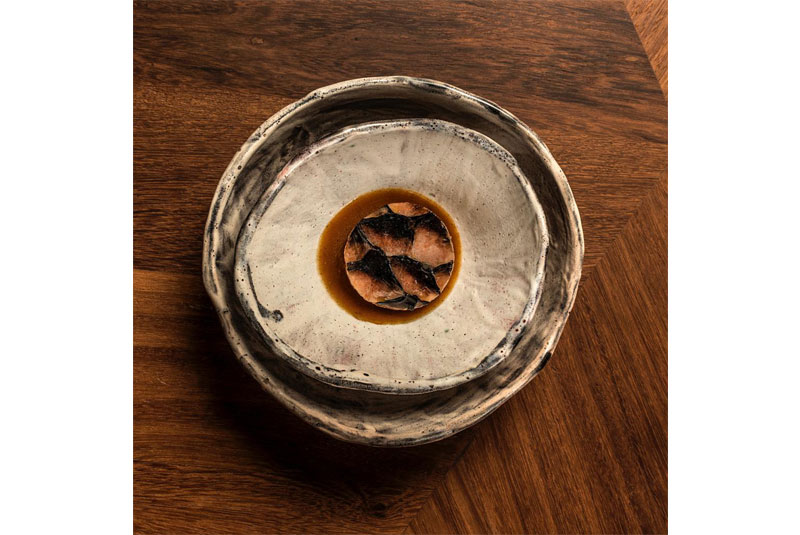
Pirarucú skin and tongue
The new tasting menu comes in two sizes: an eight-course and a 13-course experience. As part of the menu development, the mother-and-daughter duo focused on reducing the time needed to enjoy the full experience, with the longer version taking about two hours and 40 minutes, and the shorter less than two hours – a “real record”, according to the chef and the sommelier.
“One of the most important tools of global haute cuisine is to base itself on traditional cuisines, on the memories that identify us,” says Espinosa. “This narrative spells the flavour of Colombia, but through biodiversity we can tell new stories. Every time we present a dish, we explain where it comes from and what uses the ethnic communities give to its ingredients, not only in the kitchen, but also in medicine, in their own ways of conceiving life and in their mysticism and religions. That’s the beauty of it. Each preparation gives visibility to an unknown territory of Colombia.”
“The pandemic has heightened the importance of using local products,” adds Hernández Espinosa. “When you think about economic reactivation, how does it become valuable? It’s not only from a cultural point of view or because of the journey we create through the different regions of the country. It’s also about how gastronomy is ratified as a political and economic instrument of transformation.”
Surviving the pandemic
While restaurant Leo hibernated for most of 2020, its creators did not rest on their laurels. “During the first 45-day lockdown, I took time to think about my next step and to reconsider my whole culinary philosophy,” says Espinosa. “I started to read about the behaviour of luxury brands in times of economic crisis. They are usually among the few brands that remain in the market, because after a crisis, people look for that differential factor. So I decided to do everything possible to protect Leo, and I decided to continue with the focus on craftmanship and sustainability, but also to start being a bit more disruptive.”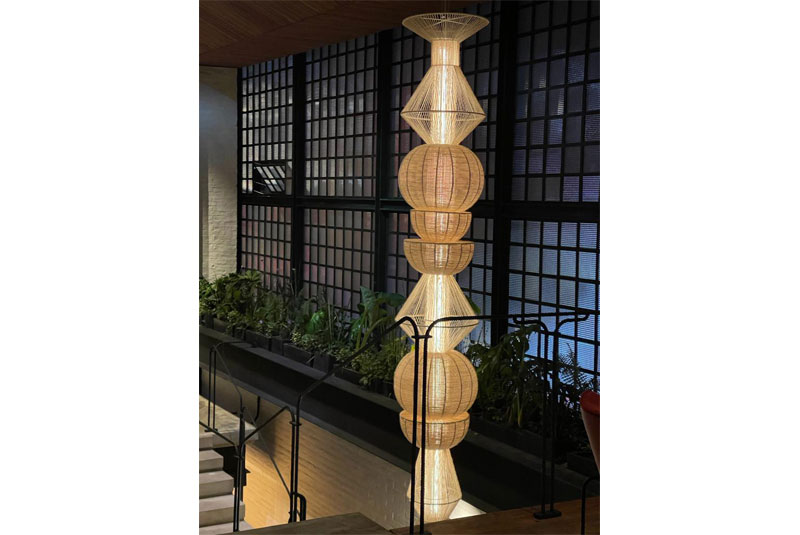
Details of Leo's new space
Through March and April 2020, locked in her home, Espinosa started sharing her home-cooking recipes on social media. These became the foundation of Mi Casa en Tu Casa, a food delivery service that helped the business navigate the pandemic and that has now blossomed into a full-blown concept with its own permanent space.
But it was in January 2021, after Mi Casa en Tu Casa had already taken off, when Espinosa felt the full effect of the pandemic. “I had to think about reopening Leo, and it became clear that two of the cooks with whom I had been working very closely had taken a different path. I felt that my creative tank was totally empty. The new restaurant was in the works, but the part that really makes up its soul, the culinary creativity, didn’t exist.
“It was a difficult process, with a lot of anguish and sleepless nights. One day, I called an indigenous friend from the region of La Guajira. I remember telling her: ‘I’m desperate, I have no direction, I don’t know where I’m going’. She told me: ‘Come here’. I went to her rancheria, and that opened everything up for me. I understood that my cooking is based on those trips, which are not to research ingredients, but to share moments with these matrons who have the knowledge of the ingredient in its origin. That's when I began to feel that life was coming back to me.”
A new beginning together
The first service at Leo takes place today, Wednesday 23rd June, marking the beginning of a new era – although for Espinosa, it has been a long time coming. “This is the end of the road. Our path led us to this, to being able to manifest ourselves this way with a greater focus on Laura’s own creativity.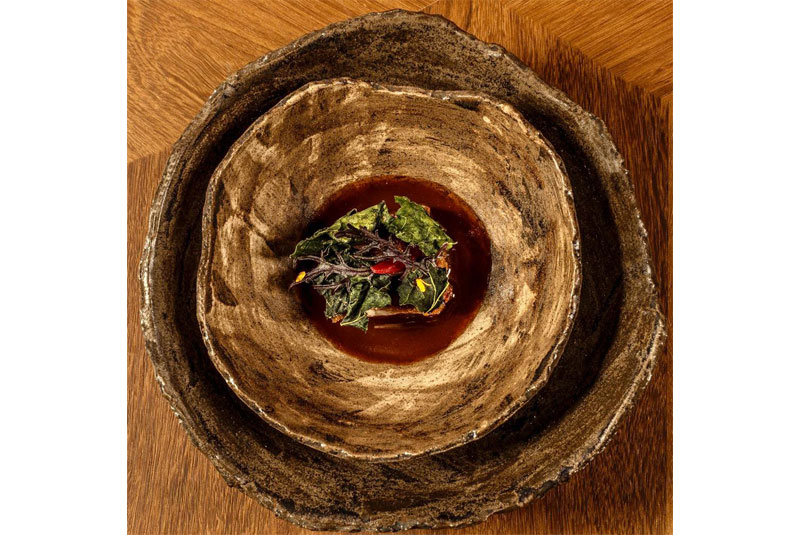
Mutton, Arhuacos heirloom cocoa, wild cabbage, ocañera onion
“A restaurant is made up of food and drink – one cannot be more important than the other. The gastronomic world is out of balance; there are very few restaurants that can maintain this equilibrium, such as El Celler de Can Roca. Drinks too often take second place. Now, it’s going to be the opposite. Laura and Leonor are putting all their creativity into a single concept, into a single idea,” says the chef.
“We have become much more resilient,” adds Hernández Espinosa. “I’m excited to explore my creative side more with the cocktails and the drinks pairing. And I feel proud of my mum for being consistent with her ideas. She has been working on the concept for Leo for 16 years and decided not to change it, but to reinforce it. That gives me a lot of pride.”
‘50/50 is the new 50’ is a content series created by 50 Best and supported by S.Pellegrino with the shared aim of promoting equality, inclusivity and balance in the hospitality sector and beyond.
The World’s 50 Best Restaurants is coming back in 2021, with an awards ceremony and hybrid event programme to be hosted in Antwerp, Flanders, in October. To be the first to hear about the latest news and announcements, join the community on Instagram, Facebook, Twitter and YouTube.
